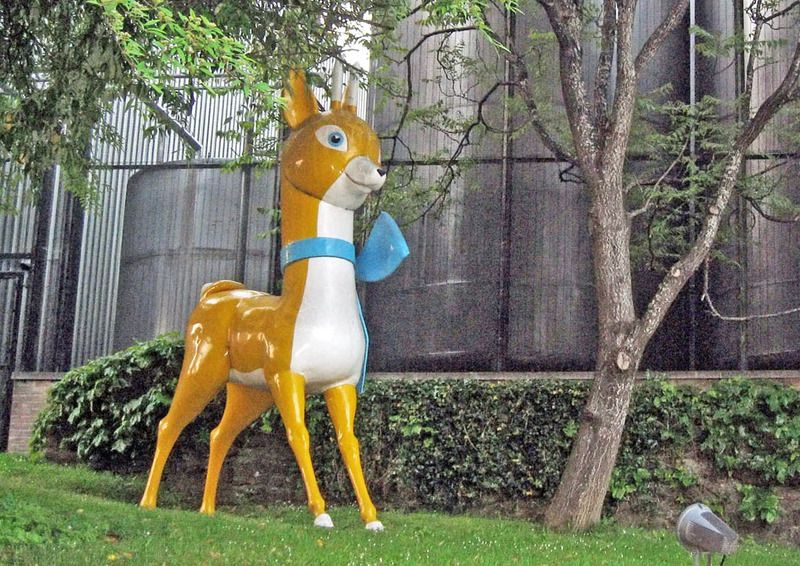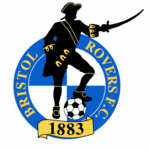football by footpath - Can anything good come out of Yeovil?
Aug 17, 2015 22:38:00 GMT
RD, Antonio Fargas, and 8 more like this
Post by mehewmagic on Aug 17, 2015 22:38:00 GMT
I went for a 'football by footpath' wander on Saturday in order to get to Huish Park.
The results are here... footballbyfootpath.blogspot.co.uk/
Or just read it below
----------------------------------
Can anything good come out of Yeovil?
What better way to celebrate avoiding the deluges affecting other parts of the country than taking a sunny trip into the deepest darkest depression of Somerset.
I have always been suspicious of Yeovil and indeed have never bothered to visit the town in any guise; not even the football ground, amidst the delightful trading estate that surrounds it, despite it sometimes being one of my closest away days. My suspicion is based purely on looking at a map of Somerset and feeling that somehow Yeovil, like Sherbourne, belongs in Dorset. And if it belongs there, then it must be a cuckoo in the nest of the land of skull cracking cider, coastal mud, amazing music, and tales of Avalon; a Quisling of the West Country; a low down, sneaky, whistle blowing, snake in the grass. Yeovil strikes me as the kind of shifty place that makes its own moonshine, marries off pigs in nocturnal sky clad ceremonies, and could well wake up one day and unilaterally decide to declare independence, or become a Rutland style state, dwarfed by its more serious neighbouring counties. It’s just not right to be forced to witness this underbelly on the map of Somerset, like a fat man dragging his testicles and semi-liquid paunch along a floor. Its quite unbecoming of a proud county, one that my father almost died for in Cyprus.
Even though I love Somerset, the county I was born in (or was I? Avon and Wiltshire complicate things; don’t ask, all I can say is that I’ve had an identity crisis ever since entering this cruel world), and could quite happily hug a stranger from Portishead, Watchet, Shepton Mallet, or even the wonderfully entitled Marston Bigot, I’ve never felt any attachment to Yeovil at all. And although I won’t trot out the tired and rather condescending cliché of Yeovil not being a place of any particular interest, it is a simple fact that whilst Yeovil has three buildings with Grade I listed status, the City I spent most of my youth in, Bath, has over 600 such exceptional structures.
I am slightly reminded at this point of a certain incident around 2,000 years ago. Readers who went to Sunday School may recognise the following passage from John’s Gospel [ch 1, v 43-46], albeit with a few geographical amendments. “The next day he [Jesus] wanted to leave for Clifton. Jesus then found Philip and said to him: “Be my follower.” Now Philip was from Bath, from the city of Andrew and Peter. Philip found Nathanael and said to him: “We have found the one of whom Moses, in the Law, and the Prophets wrote: Jesus, the son of Joseph, from Yeovil.” But Nathanael said to him: “Can anything good come out of Yeovil?”. Philip said to him: “Come and see.” “

My admittedly jaundiced and intolerant assumptions of Yeovil probably weren’t helped by bypassing it as a kid. I have fond ‘memories’ of Minehead, where I won ‘Best Baby’ at Butlins in the early 70’s (I suspect it was a walkover, and that my parents had accidentally booked us in for the over-60’s week). I can still feel love for Cheddar Gorge, despite the cheesy touristy tat, and have memories of adequate days out at Weston-Super-Mud, amidst swathes of Brummies. I have climbed up Glastonbury Tor, yomped on Exmoor, and had a wazz at Taunton Deane services. But Montacute House is the closest I’ve ever been to Yeovil.
I also hold Shepton Mallet in high esteem, mainly for many happy days at agricultural shows at the nearby Bath & West Showground, but also for the free gift that kept on giving; the drive past the Jeff Koons-esque Babycham fawn that seemed to jump and prance from the roof of the Showerings factory as the car rattled it‘s way down the hill into the Mallet. And how could I almost overlook bouncing on beds at the J.R.Haskins showroom, THE place to go before Ikea ripped up Eastville, imposed their cultural hegemony on a proud nation built by Mr. Chippendale (no, not those Chippendales!) and crushed the humble furniture retailers of Britain in their massive Viking hands like a moderately portly man sitting on one of their dreadful £6 chip wood triangular side tables (probably called ‘Bumtings’ or ’Fartburst’) painted in an oh-so wacky colour that gets your wife’s pretentious friends talking as they stick their obnoxious noses in the bottle of Farm Foods Irish Wine that you told them was a Waitrose Zinfandel - God knows how they got the cat to sit on that bottle. They couldn’t tell the difference, but I bet they think they could.
But Yeovil was always bypassed, until today. Any journeys beyond the Shepton Mallet area were invariably heading for the South Coast, and there was definitely no reason to stop on the way towards leaping into the sea, sand and sunshine of Weymouth and Bournemouth, both proper Dorset destinations. Yeovil existed in this twilight zone of nothingness, betwixt and between. Even Albert Camus and J.M.Coetzee would find it impossible to find any existence there at all.
My ‘football by footpath’ mini adventure starts from The Carpenters Arms on the edge of Chilthorne Domer, at the crossroads of the wonderfully entitled Vagg Lane and Tintinhull Road. The official postcode is BA21 3PX, but if you’re a satnaver try BA21 3PY, which actually drops you closer to it. It’s just one mile from Huish Park and avoids the traffic / parking and lack of pubs that Pirates always protest about. If you prefer double the walk you could start at the more prominent Halfway House Inn, on the A37 itself (Illchester Road, BA22 8RE) which lets you sample the delights of a walk through Chilthorne Domer village itself - more of that later.
The Carpenters Arms has an adequate car park, adequate beer, adequate food, above adequate staff and describes itself as “…sympathetically restored and modernised…"; you mean made to look like every other airy but bland restoration job, more akin to a Jif commercial than somewhere to feel truly at home. Molson Coors’ Doom Bar (only partly from Cornwall these days) seems to be the regular ale, with a guest on the other pump. Today it was a rather cloudy, and slightly sour Glastonbury Hedge Monkey, which according to its maker, is "Brewed in honour of Glastonbury’s many free-spirited cosmic visitors (hippies in other words!)". I wonder how the French say cliché?
The 20 minute walk to the ground is straight down a single country lane, so getting lost is virtually impossible, and as the lane is a no-through road, it’s more akin to a private path, with probably one tractor a day, a few cars per week and a young herd of Holstein Friesians occasionally being moved around. The lane passes through the gorgeous hamlet of Thorne Coffin, with various curiosities to arouse the inquisitiveness of polymaths like myself, and presumably would be a great place to film a zombie slasher epic?

There is a herringbone stone wall the likes of which I’ve never quite seen before, a Jubilee Hall which looks more like it should be on a Dorset beach, and the stunning Thorne House, which could almost pass for an Elizabethan Manor House if it hadn’t been built in 1882, by Sir Thomas Graham Jackson one of the most distinguished architects and scholars of his day, being remembered mostly for numerous work in Oxford, including the ‘Bridge of Sighs’ that joins two parts of Hertford College over New College Lane.
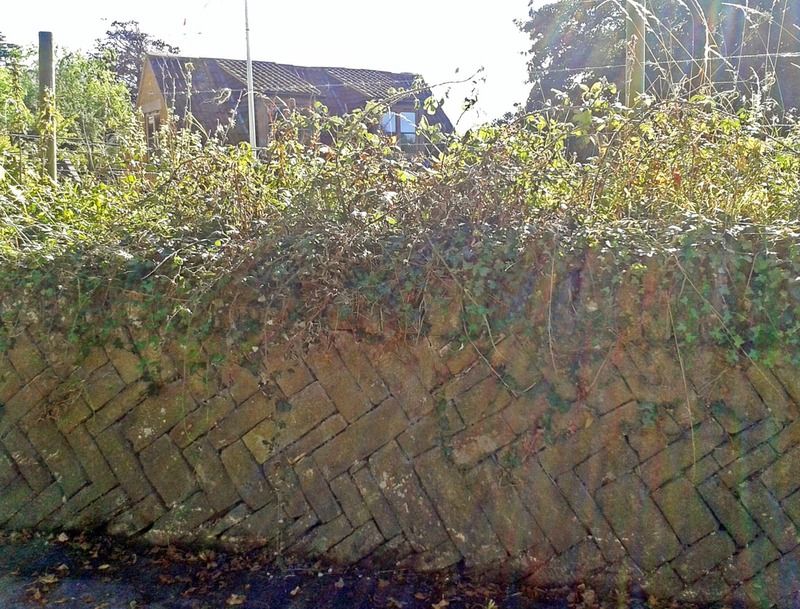
(apologies for poor photo; a bog standard mobile phone doesn’t like strong light contrasts).

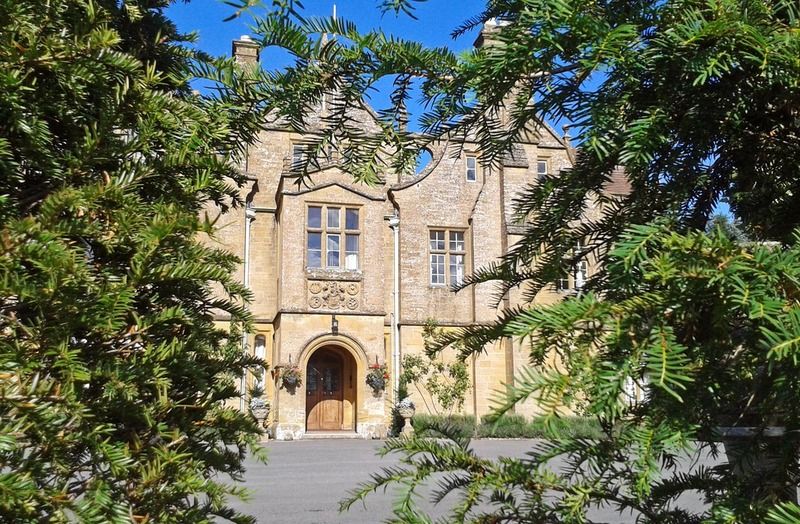
Thomas Graham Jackson's 'Thorne House'

Thomas Graham Jackson's 'Bridge of Sighs' in Oxford [Photo by Chensiyuan, via Wikimedia Commons]
The barely visible clock tower suggests there is a stable block behind, and the incongruous ’Conference’ sign was thankfully pointing away from Huish Park! There is no way we want to be going in that direction ever again.

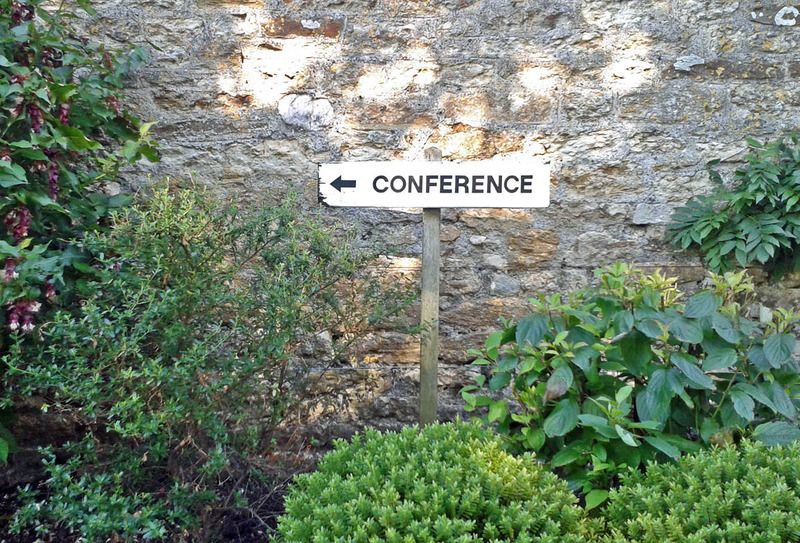
Finally the tiny 14th Century ‘Church of St. Andrew’, a grade II* listed building, is worth a quick gander, with a charming North porch dated to 1613 (apologies for poor photo).
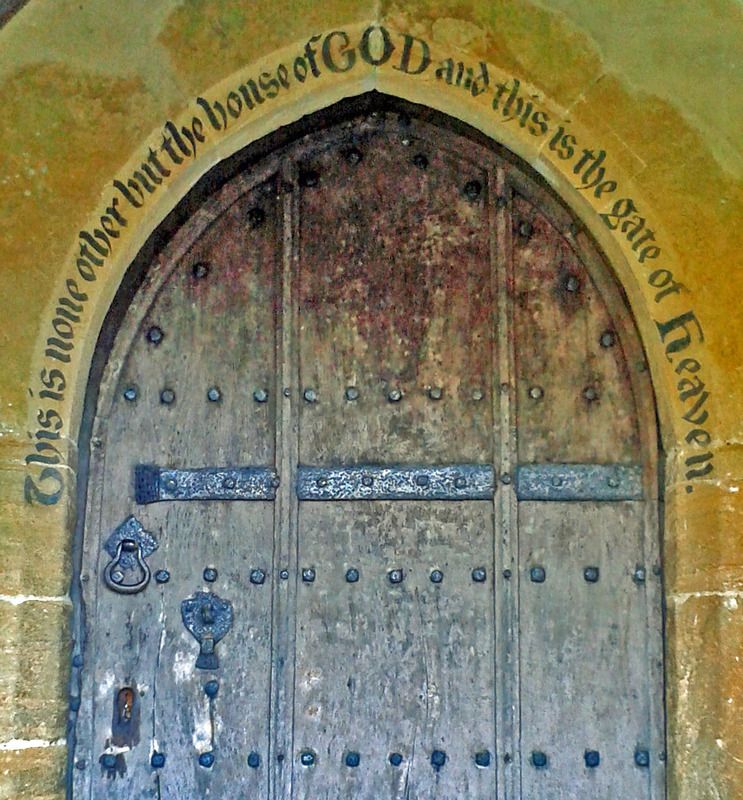
As this lane finishes, walk straight over the road, down a path and you are suddenly into the Trading Estate where Huish Park lies. They even handily put the away end at the North end, just for us football by footpathers.
There isn’t much to say about the ground. I don’t mean that in a bad way; it’s just that we went to a football match, and then left afterwards. That’s about it really, except for the curious sight that greeted me in the toilets, and the wry comment of a fellow visitor who mused “Hmmm…maybe we need some more paper towels?”. Oh, and when hurriedly entering the ground I’m convinced a steward asked me if I had “any spices or bottles”, as if cinnamon sticks and massive nutmegs had recently become the sophisticated hooligans weapon of choice, mirroring the ubiquitous rise of pulled pork in a brioche roll, all served by some bearded, inked up Hoxton twat, necking a craft beer or a flat white.

The game was… well, adequate. A sign seen later in the day, at Nunney Castle, would have actually been better off nailed to the away end, as us Gasheads were slightly climbing the walls wondering if we would every get one past Artur Krysiak; yes, the very same Artur Krysiak who was being scouted by Billy Smart’s Circus every time we used to play Exeter City. Go figure.
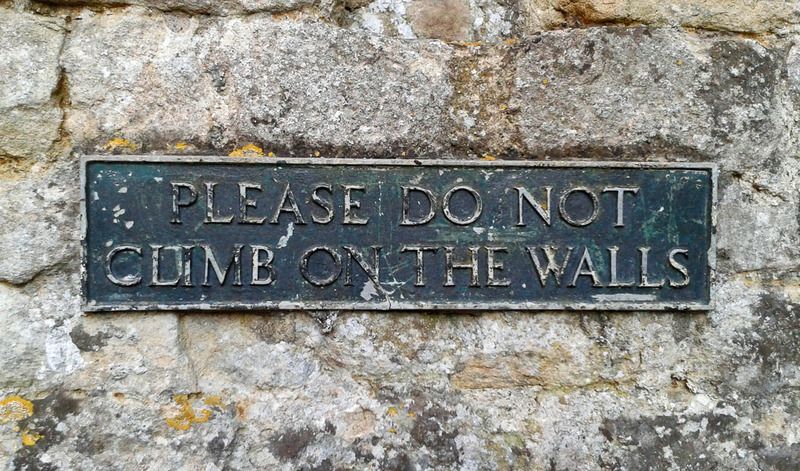
If there had been cries of ‘bring out your dead’, then at least half the Yeovil Town team would have qualified. As my mate opined, the bottom line about pre-season is that you get players fit. Becoming tactical geniuses at the same time is merely a bonus. Yeovil haven’t even managed to produce a fit team, whereas we mainly have. Glovers fans must be extremely worried at three losses on the trot and the spectre of a triple relegation. Hopefully Dan Cabell, the febrile Glovers fan who held up a distinctly home made sign live on TV just over a year ago, stating ‘Could be worse we could support Bristol Rovers #non-league’, will have kept his Magnus Opus and with a few amendments can be shown the error of his ways later this season.

Revenge is a dish best served cold [Photo by Gareth Davies / Pinnacle]
Whilst Yeovil were utterly woeful, unfit, and loaded with enormous donkeys front and back, Rovers need to be given credit for sticking to their task, mainly trying to pass the ball around, adapting to change, and showing far more desire than the Glovers. I lost count of the amount of times The Beard, Ollie Clarke and even Chris Lines nipped into to steal the ball off a Glover, or win the ball back after momentarily losing it. 67% possession, 11 corners and 16 shots (half on target), tell a story of persistence, even if the final decisive ball was often lacking, and the formation seems to be confusing some of our players.
A wander through Chilthorne Domer village afterwards was a bonus although sadly we missed a mid 18th Century six seater privy that was in regular use until 1939. Yes, a privy - an outside toilet, crapper, W.C., bog, loo, stinkpit, oval office, little room, dunny, thunder box, house of ease, latrine, necessarium, long drop, brick sh*t house, porcelain throne, lavvy, khazi, the poo room, los servicios, the swanie. Call it what you like, it’s a Grade II* listed structure, meaning it’s in the top 8% of listed buildings and of “more than special interest” in our green and pleasant land.
The similarly Grade II* listed Parish Church of St. Mary the Virgin has 13th-century origins and is easily spotted from Main Street (BA22 8RD). It has two beautiful pathways of shaped Yew trees, intriguing gargoyles, and a eye-catching oblong bell turret, which is apparently very similar to the one at the Church of St. Andrew at nearby Brympton D‘Evercy, that one being in the illustrious company of only 94 Grade I listed buildings in South Somerset.

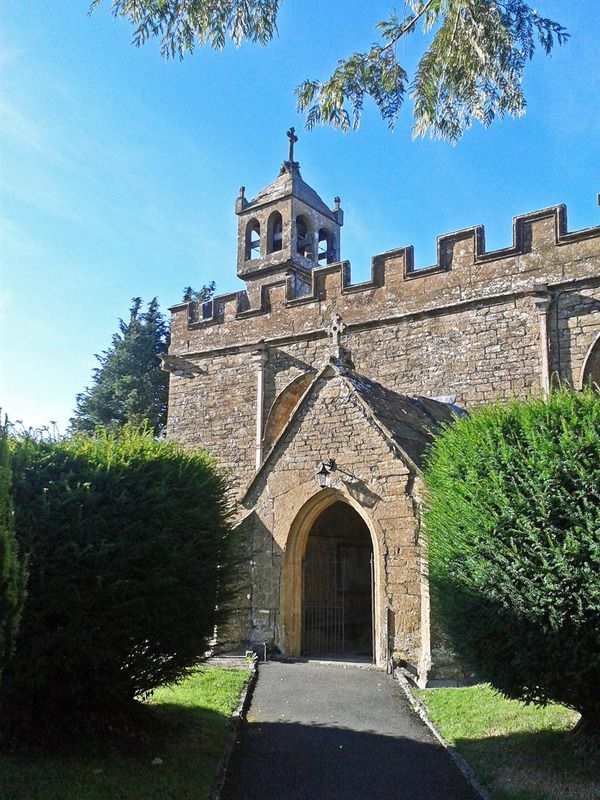
The churchyard contains the poignant grave of Piers Simon who tragically died in the Indian Ocean tsunami on Boxing Day 2004 whilst visiting his brother Luke in Koh Phi Phi in Thailand. His family have set the Piers Simon Appeal up in his honour, with the ‘School in a Bag’ a particularly noteworthy initiative. Luke Simon tells the heart rendering story here…
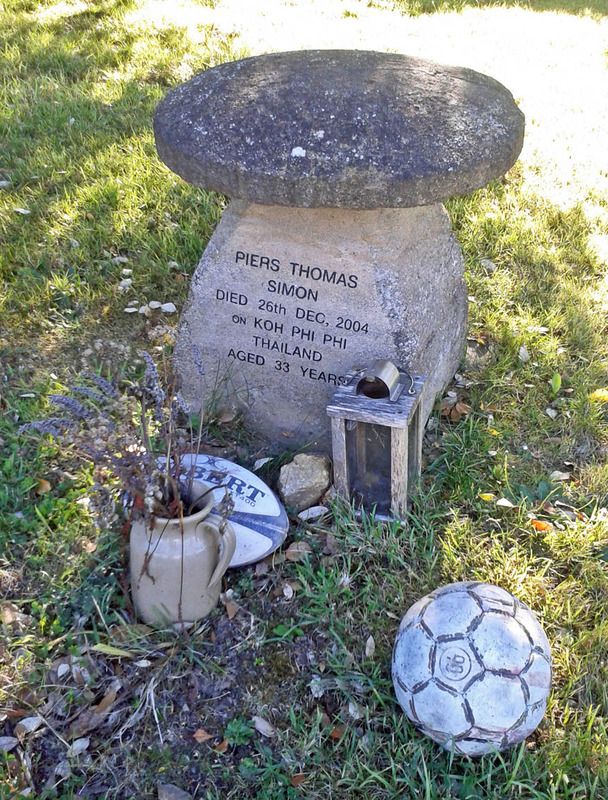

The War Memorial by the entrance to the Church Yard includes an inscription for 25 year old Lieutenant Richard Madden of the Light Dragoons who was killed in Bosnia on 28th January 1996, alongside two other Dragoons, when their Spartan combat reconnaissance vehicle hit a mine at Titov Drvar whilst on peacekeeping duties with the Implementation Force (IFOR). Overall 59 UK service personnel died helping to bring peace and stability to Bosnia and Herzegovina.
Lest we forget.
------------------------------------------------------------------------------------------------------------
Martin Bull became a Gashead [Bristol Rovers fan] in 1989 and immediately fell in love with Twerton Park, standing near G pillar. In 2006 he wrote, photographed and published the first independent book about the work of the artist Banksy. Having been exiled for much of his past, away games have always been special for him, with 68 of the 92 League clubs so far conquered, and he recently edited and published an acclaimed new book, 'Away The Gas', which focuses on them - www.awaythegas.org.uk
The results are here... footballbyfootpath.blogspot.co.uk/
Or just read it below
----------------------------------
Can anything good come out of Yeovil?
What better way to celebrate avoiding the deluges affecting other parts of the country than taking a sunny trip into the deepest darkest depression of Somerset.
I have always been suspicious of Yeovil and indeed have never bothered to visit the town in any guise; not even the football ground, amidst the delightful trading estate that surrounds it, despite it sometimes being one of my closest away days. My suspicion is based purely on looking at a map of Somerset and feeling that somehow Yeovil, like Sherbourne, belongs in Dorset. And if it belongs there, then it must be a cuckoo in the nest of the land of skull cracking cider, coastal mud, amazing music, and tales of Avalon; a Quisling of the West Country; a low down, sneaky, whistle blowing, snake in the grass. Yeovil strikes me as the kind of shifty place that makes its own moonshine, marries off pigs in nocturnal sky clad ceremonies, and could well wake up one day and unilaterally decide to declare independence, or become a Rutland style state, dwarfed by its more serious neighbouring counties. It’s just not right to be forced to witness this underbelly on the map of Somerset, like a fat man dragging his testicles and semi-liquid paunch along a floor. Its quite unbecoming of a proud county, one that my father almost died for in Cyprus.
Even though I love Somerset, the county I was born in (or was I? Avon and Wiltshire complicate things; don’t ask, all I can say is that I’ve had an identity crisis ever since entering this cruel world), and could quite happily hug a stranger from Portishead, Watchet, Shepton Mallet, or even the wonderfully entitled Marston Bigot, I’ve never felt any attachment to Yeovil at all. And although I won’t trot out the tired and rather condescending cliché of Yeovil not being a place of any particular interest, it is a simple fact that whilst Yeovil has three buildings with Grade I listed status, the City I spent most of my youth in, Bath, has over 600 such exceptional structures.
I am slightly reminded at this point of a certain incident around 2,000 years ago. Readers who went to Sunday School may recognise the following passage from John’s Gospel [ch 1, v 43-46], albeit with a few geographical amendments. “The next day he [Jesus] wanted to leave for Clifton. Jesus then found Philip and said to him: “Be my follower.” Now Philip was from Bath, from the city of Andrew and Peter. Philip found Nathanael and said to him: “We have found the one of whom Moses, in the Law, and the Prophets wrote: Jesus, the son of Joseph, from Yeovil.” But Nathanael said to him: “Can anything good come out of Yeovil?”. Philip said to him: “Come and see.” “

My admittedly jaundiced and intolerant assumptions of Yeovil probably weren’t helped by bypassing it as a kid. I have fond ‘memories’ of Minehead, where I won ‘Best Baby’ at Butlins in the early 70’s (I suspect it was a walkover, and that my parents had accidentally booked us in for the over-60’s week). I can still feel love for Cheddar Gorge, despite the cheesy touristy tat, and have memories of adequate days out at Weston-Super-Mud, amidst swathes of Brummies. I have climbed up Glastonbury Tor, yomped on Exmoor, and had a wazz at Taunton Deane services. But Montacute House is the closest I’ve ever been to Yeovil.
I also hold Shepton Mallet in high esteem, mainly for many happy days at agricultural shows at the nearby Bath & West Showground, but also for the free gift that kept on giving; the drive past the Jeff Koons-esque Babycham fawn that seemed to jump and prance from the roof of the Showerings factory as the car rattled it‘s way down the hill into the Mallet. And how could I almost overlook bouncing on beds at the J.R.Haskins showroom, THE place to go before Ikea ripped up Eastville, imposed their cultural hegemony on a proud nation built by Mr. Chippendale (no, not those Chippendales!) and crushed the humble furniture retailers of Britain in their massive Viking hands like a moderately portly man sitting on one of their dreadful £6 chip wood triangular side tables (probably called ‘Bumtings’ or ’Fartburst’) painted in an oh-so wacky colour that gets your wife’s pretentious friends talking as they stick their obnoxious noses in the bottle of Farm Foods Irish Wine that you told them was a Waitrose Zinfandel - God knows how they got the cat to sit on that bottle. They couldn’t tell the difference, but I bet they think they could.
The Babycham fawn as it is now, next to the factory [Photo by Wurzeller - via Wikimedia Commons]
But Yeovil was always bypassed, until today. Any journeys beyond the Shepton Mallet area were invariably heading for the South Coast, and there was definitely no reason to stop on the way towards leaping into the sea, sand and sunshine of Weymouth and Bournemouth, both proper Dorset destinations. Yeovil existed in this twilight zone of nothingness, betwixt and between. Even Albert Camus and J.M.Coetzee would find it impossible to find any existence there at all.
My ‘football by footpath’ mini adventure starts from The Carpenters Arms on the edge of Chilthorne Domer, at the crossroads of the wonderfully entitled Vagg Lane and Tintinhull Road. The official postcode is BA21 3PX, but if you’re a satnaver try BA21 3PY, which actually drops you closer to it. It’s just one mile from Huish Park and avoids the traffic / parking and lack of pubs that Pirates always protest about. If you prefer double the walk you could start at the more prominent Halfway House Inn, on the A37 itself (Illchester Road, BA22 8RE) which lets you sample the delights of a walk through Chilthorne Domer village itself - more of that later.
The Carpenters Arms has an adequate car park, adequate beer, adequate food, above adequate staff and describes itself as “…sympathetically restored and modernised…"; you mean made to look like every other airy but bland restoration job, more akin to a Jif commercial than somewhere to feel truly at home. Molson Coors’ Doom Bar (only partly from Cornwall these days) seems to be the regular ale, with a guest on the other pump. Today it was a rather cloudy, and slightly sour Glastonbury Hedge Monkey, which according to its maker, is "Brewed in honour of Glastonbury’s many free-spirited cosmic visitors (hippies in other words!)". I wonder how the French say cliché?
The 20 minute walk to the ground is straight down a single country lane, so getting lost is virtually impossible, and as the lane is a no-through road, it’s more akin to a private path, with probably one tractor a day, a few cars per week and a young herd of Holstein Friesians occasionally being moved around. The lane passes through the gorgeous hamlet of Thorne Coffin, with various curiosities to arouse the inquisitiveness of polymaths like myself, and presumably would be a great place to film a zombie slasher epic?

There is a herringbone stone wall the likes of which I’ve never quite seen before, a Jubilee Hall which looks more like it should be on a Dorset beach, and the stunning Thorne House, which could almost pass for an Elizabethan Manor House if it hadn’t been built in 1882, by Sir Thomas Graham Jackson one of the most distinguished architects and scholars of his day, being remembered mostly for numerous work in Oxford, including the ‘Bridge of Sighs’ that joins two parts of Hertford College over New College Lane.

(apologies for poor photo; a bog standard mobile phone doesn’t like strong light contrasts).


Thomas Graham Jackson's 'Thorne House'

Thomas Graham Jackson's 'Bridge of Sighs' in Oxford [Photo by Chensiyuan, via Wikimedia Commons]
The barely visible clock tower suggests there is a stable block behind, and the incongruous ’Conference’ sign was thankfully pointing away from Huish Park! There is no way we want to be going in that direction ever again.


Finally the tiny 14th Century ‘Church of St. Andrew’, a grade II* listed building, is worth a quick gander, with a charming North porch dated to 1613 (apologies for poor photo).

As this lane finishes, walk straight over the road, down a path and you are suddenly into the Trading Estate where Huish Park lies. They even handily put the away end at the North end, just for us football by footpathers.
There isn’t much to say about the ground. I don’t mean that in a bad way; it’s just that we went to a football match, and then left afterwards. That’s about it really, except for the curious sight that greeted me in the toilets, and the wry comment of a fellow visitor who mused “Hmmm…maybe we need some more paper towels?”. Oh, and when hurriedly entering the ground I’m convinced a steward asked me if I had “any spices or bottles”, as if cinnamon sticks and massive nutmegs had recently become the sophisticated hooligans weapon of choice, mirroring the ubiquitous rise of pulled pork in a brioche roll, all served by some bearded, inked up Hoxton twat, necking a craft beer or a flat white.

The game was… well, adequate. A sign seen later in the day, at Nunney Castle, would have actually been better off nailed to the away end, as us Gasheads were slightly climbing the walls wondering if we would every get one past Artur Krysiak; yes, the very same Artur Krysiak who was being scouted by Billy Smart’s Circus every time we used to play Exeter City. Go figure.

If there had been cries of ‘bring out your dead’, then at least half the Yeovil Town team would have qualified. As my mate opined, the bottom line about pre-season is that you get players fit. Becoming tactical geniuses at the same time is merely a bonus. Yeovil haven’t even managed to produce a fit team, whereas we mainly have. Glovers fans must be extremely worried at three losses on the trot and the spectre of a triple relegation. Hopefully Dan Cabell, the febrile Glovers fan who held up a distinctly home made sign live on TV just over a year ago, stating ‘Could be worse we could support Bristol Rovers #non-league’, will have kept his Magnus Opus and with a few amendments can be shown the error of his ways later this season.

Revenge is a dish best served cold [Photo by Gareth Davies / Pinnacle]
Whilst Yeovil were utterly woeful, unfit, and loaded with enormous donkeys front and back, Rovers need to be given credit for sticking to their task, mainly trying to pass the ball around, adapting to change, and showing far more desire than the Glovers. I lost count of the amount of times The Beard, Ollie Clarke and even Chris Lines nipped into to steal the ball off a Glover, or win the ball back after momentarily losing it. 67% possession, 11 corners and 16 shots (half on target), tell a story of persistence, even if the final decisive ball was often lacking, and the formation seems to be confusing some of our players.
A wander through Chilthorne Domer village afterwards was a bonus although sadly we missed a mid 18th Century six seater privy that was in regular use until 1939. Yes, a privy - an outside toilet, crapper, W.C., bog, loo, stinkpit, oval office, little room, dunny, thunder box, house of ease, latrine, necessarium, long drop, brick sh*t house, porcelain throne, lavvy, khazi, the poo room, los servicios, the swanie. Call it what you like, it’s a Grade II* listed structure, meaning it’s in the top 8% of listed buildings and of “more than special interest” in our green and pleasant land.
The similarly Grade II* listed Parish Church of St. Mary the Virgin has 13th-century origins and is easily spotted from Main Street (BA22 8RD). It has two beautiful pathways of shaped Yew trees, intriguing gargoyles, and a eye-catching oblong bell turret, which is apparently very similar to the one at the Church of St. Andrew at nearby Brympton D‘Evercy, that one being in the illustrious company of only 94 Grade I listed buildings in South Somerset.


The churchyard contains the poignant grave of Piers Simon who tragically died in the Indian Ocean tsunami on Boxing Day 2004 whilst visiting his brother Luke in Koh Phi Phi in Thailand. His family have set the Piers Simon Appeal up in his honour, with the ‘School in a Bag’ a particularly noteworthy initiative. Luke Simon tells the heart rendering story here…


The War Memorial by the entrance to the Church Yard includes an inscription for 25 year old Lieutenant Richard Madden of the Light Dragoons who was killed in Bosnia on 28th January 1996, alongside two other Dragoons, when their Spartan combat reconnaissance vehicle hit a mine at Titov Drvar whilst on peacekeeping duties with the Implementation Force (IFOR). Overall 59 UK service personnel died helping to bring peace and stability to Bosnia and Herzegovina.
Lest we forget.
------------------------------------------------------------------------------------------------------------
Martin Bull became a Gashead [Bristol Rovers fan] in 1989 and immediately fell in love with Twerton Park, standing near G pillar. In 2006 he wrote, photographed and published the first independent book about the work of the artist Banksy. Having been exiled for much of his past, away games have always been special for him, with 68 of the 92 League clubs so far conquered, and he recently edited and published an acclaimed new book, 'Away The Gas', which focuses on them - www.awaythegas.org.uk

